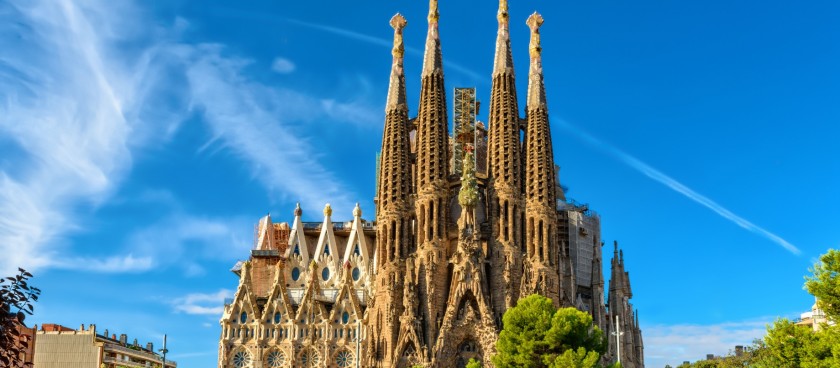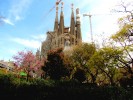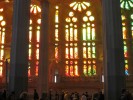- #ES01
- Carrer de Mallorca, 401, 08013 Barcelona, Spain
- +34932080414
- https://sagradafamilia.org/en
- Working hours*:
November through February from 9 am to 6 pm. March from 9 am to 7 pm. April through September from 9 am to 8 pm. October from 9 am to 7 pm. 25 and 26 December, 1 and 6 January from 9 am to 2 pm. - Prices*:
Sagrada Familia Basic Ticket - 17€
Sagrada Familia with audioguide - 25€
Sagrada Familia with guided tour - 26€
Sagrada Familia and Gaudi house museum - 27€
Sagrada Familia with towers - 32€ - * - opening and closing times as well as entrance prices, are subject to alterations without notice. Visitors are advised to check before visiting.
- 41.4036380, 2.1743560 Copy to clipboard Copy
-
#Architectural Oddities , #Churches
BEGINNINGS
The beginnings of the Expiatory Temple of the Sagrada Família date back to 1866, when Josep Maria Bocabella i Verdaguer founded the Associació Espiritual de Devots de Sant Josep (Spiritual Association of the Devotees of Saint Joseph), which in 1874 began campaigning for the construction of an expiatory temple dedicated to the Holy Family. In 1881, thanks to several donations, the Association purchased a 12,800-m² plot of land, delimited by Marina, Provença, Sardenya, and Mallorca streets, to build the Temple.
The cornerstone was laid on 19 March, the feast of Saint Joseph, in 1882 in a solemn event presided over by the bishop of Barcelona, Joseph Urquinaona. This kicked off the construction, which began with the crypt under the apse following the neo-Gothic design of diocesan architect Francisco de Paula del Villar y Lozano, the Temple's first architect. Just a short while later, due to differences of opinion with the developers, he stepped down and the position was given to Antoni Gaudí.
21st CENTURY
In 2000, the vaults on the central nave and transept were built, and work began on the foundations for the Glory façade. In 2001, the central window on the Passion façade was completed and a stained-glass window dedicated to the resurrection, by Joan Vila-Grau, installed. Work was also completed on the four columns at the centre of the crossing.
Gaudí and his work were memorialised in 2002, when the Barcelona City Council promoted International Gaudí Year to celebrate the 150th anniversary of his birth. The Expiatory Temple of the Sagrada Família participated with several activities.
From 2002 until 2005, sculptors Josep Maria Subirachs and the Japanese Etsuro Sotoo, decorate the Pasion façade and the the windows on the central nave, respectively. In 2006, the choirs on the Glory façade were built following Gaudí's models. The vaults on the apse ambulatory were completed in 2008. Between 2008 and 2010, the vaults on the crossing and the apse were completed. 2010 was a significant milestone in the history of the Sagrada Família, with the consecration of the Temple by Pope Benedict XVI.
PRESENT
19 March 2017 was the 135th anniversary of the laying of the cornerstone of the Temple. Currently, 70% of the Basilica is finished and we are working on building the six central towers.
In 2017, construction of the towers of the Evangelists and the Virgin Mary, which began in December 2016, continued at a good pace with the tensioned stone panels made at the workshop in La Galera. The towers follow the architectural model of the sacristy, which Gaudí left a plaster model of.
In 2018, work is focusing on continuing to build the towers of the Evangelists and the Virgin Mary and beginning work on the tower of Jesus Christ. The remaining symbolic elements on the upper portico of the Passion façade are also being executed and put in place.




